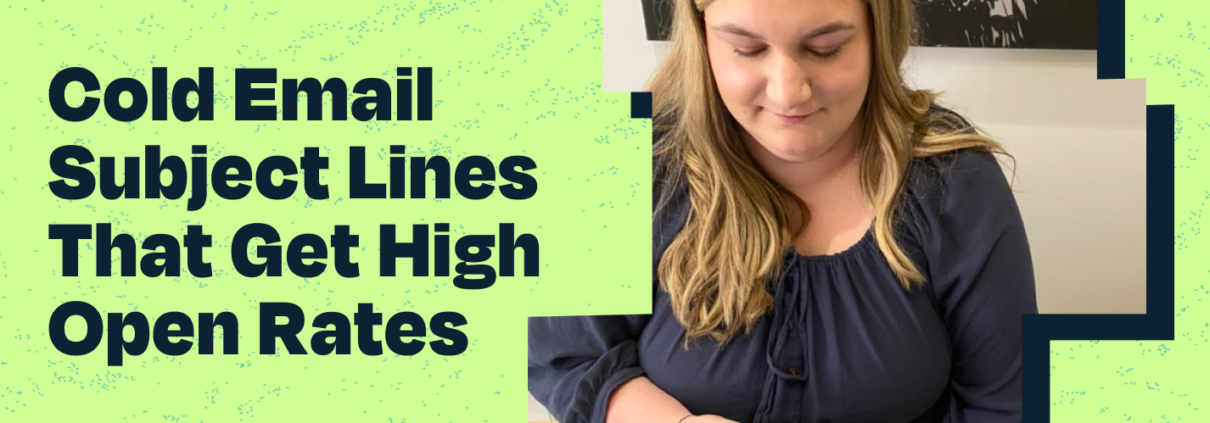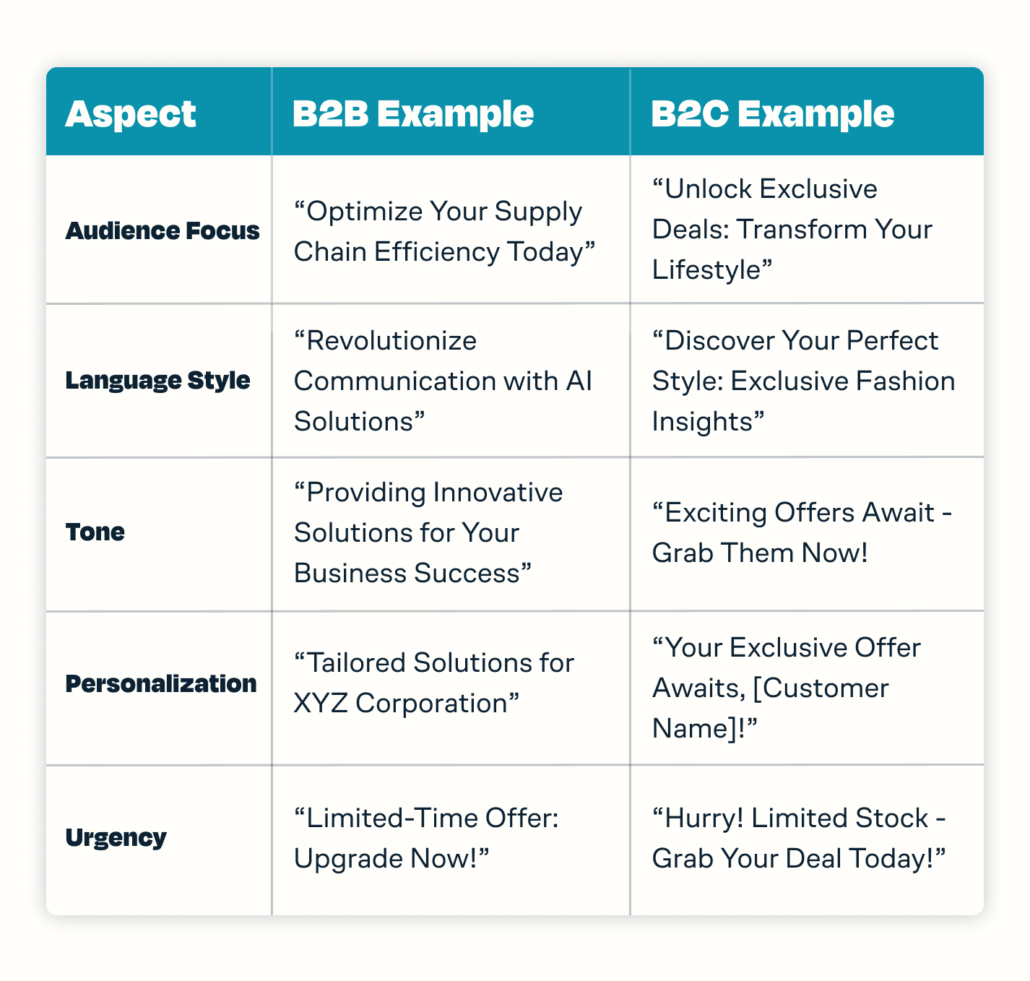Cold Email Subject Lines That Get High Open Rates

Don’t believe us? Listen to this: According to data from HubSpot, 79% of marketers say email is one of their top three most effective marketing channels. Meanwhile, in 2023, 77% of marketers say they saw an increase in email engagement. That’s probably because a whopping 99% of consumers check their email every single day.
Powerful emails start with powerful subject lines — and even though they should typically be nine words or less, cold email subject lines can be really hard to write. In this article, you’ll learn how to craft cold subject lines that improve open rates, click-through rates, and engagement for your startup. Let’s dive in!
Understanding subject line psychology
While it’s true that we all check our emails every day, most of us aren’t digging very deep. More often than not, we’re skimming subject lines for stuff that looks important or interesting. This means that the best subject lines do two things: They quickly grab your attention AND tempt you to open the email.
Of course, “attention-grabbing” and “tempting” are subjective. If you want to write compelling cold email subject lines, you’ll first need to understand the mindset of the people opening your emails. Whether you’re writing for a B2B or B2C audience, knowing your recipients’ aspirations, pain points, and preferences is key. Tailoring your subject lines to address their needs can help you make that personal connection and capture their interest.
B2B subject lines
When writing cold subject lines for a B2B audience, make sure you address their specific challenges. By tailoring your content to meet those needs, you’ll demonstrate knowledge of their industry and make it clear you understand their concerns. Another way you can improve your B2B subject lines is by including industry-specific language that your audience is familiar with. (Not jargon — more on that later!) Doing this will help you build credibility and reinforce the idea that your product or service is a tailored solution designed to solve readers’ specific problems.
B2C subject lines
If you’re writing for a B2C audience, you’ll want your subject lines to align with what your customers are already looking for. Does your product make life easier? Does it help save time or money? No matter what your specific value proposition is, make sure you incorporate it into your subject line. With this approach, it feels less like you’re selling something and more like you’re building a relationship based on common ground. Consumers have all sorts of reasons for purchasing a product or service, so make sure your messaging authentically speaks to pain points.
Where curiosity meets authenticity
When it comes to cold email subject lines, balancing intrigue with authenticity is an art form. We’ve all received promotional emails that overpromise and underdeliver, like:
- Subject Line: SAVE UP TO 70% SITEWIDE!
- Fine Print: Discount only valid on last-chance clearance items. ALL SALES FINAL.
While sparking your recipients’ interest is essential, it’s equally important to respect their time and stay transparent. Attention spans are constantly shrinking, and your prospects are likely getting burnt out on sifting through countless emails every day. Therefore, crafting subject lines that invoke curiosity without resorting to misleading tactics requires some finesse (and commitment).
The good news: There are several transparent subject line strategies that can pique your prospects’ interest without compromising authenticity. Try some of these on for size!
- Tease valuable content: Hint at valuable content that the recipient can access by opening the email.
- Example: “Unlock Our 5 Secrets: Your Access to Exclusive Insights Inside!”
- Offer exclusive insights: Make it clear that your email contains unique and/or exclusive information.
- Example: “Insiders Only: What the Competition Doesn’t Want You to Know”
- Pose intriguing questions: Engage your recipients by asking a thought-provoking question.
- Example: “Customer Engagement: What if Your Strategy Could Double Interaction Rates?”
- Highlight real results: Provide concrete examples of how your product or service has helped other people.
- Example: “Real Results, Real Impact: See How Our Solution Transforms Businesses”
- Tell a story: Share a narrative that clearly illustrates the problem your product solves.
- Example: “Journey to Success: A Tale of Overcoming Challenges with Our Product”
Make your email interesting enough to grab attention, but make sure the content matches the subject line to avoid disappointing your readers. If you consistently oversell in your subject line, your readers will stop opening your emails — or worse — unsubscribe.
Power words and powerful tools
Language is an important tool in the world of cold emails. There are several “power words” that resonate with both B2B and B2C audiences. These carefully-chosen words evoke emotion, convey value, and encourage action. Putting these keywords in your subject lines can help your emails stand out in crowded inboxes. Some examples of power words startups can (and should!) use include:
- Innovative: Show prospects that your startup is forward-thinking and cutting-edge.
- Exclusive: Create a sense of exclusivity and importance.
- Revolutionary: Convey a groundbreaking and game-changing impact.
- Proven: Highlight the reliability and success of your product or service.
- Tailored: Emphasize personalized solutions for your prospect’s needs.
- Transformative: Suggest significant positive changes or improvements.
- Strategic: Position your startup as having a well-thought-out plan.
- Results-driven: Focus on the tangible outcomes or benefits.
- Efficient: Highlight time-saving or resource-saving aspects.
- Insider: Imply access to insider information or exclusive opportunities.
Remember to use these words sparingly and genuinely. Overusing them can quickly diminish their impact.
Speaking of impact, you’ll also want to avoid buzzwords and jargon as much as you can. Buzzwords tend to lack substance, while jargon might not be entirely clear to your audience. Instead, use simple and straightforward language that everyone will understand. (Here’s a tip: Read your subject line out loud. If it doesn’t sound like something you’d say to a friend, give it another pass.)
If you’re still not 100% satisfied with your subject line, try using a subject line checker. Tools like SendCheckIt, Omnisend, and CoSchedule will analyze your subject line for factors like length, clarity, and emotional appeal — then provide suggestions for improvement. This information is (usually) free and can help your startup refine your email strategies.
A/B testing your cold email subject lines
It’s no secret that we LOVE A/B testing here at Tuff. A/B testing involves sending different versions of an email to a subset of your target audience, then analyzing which version performs better based on open rates and engagement. This process can be incredibly helpful for startups. A/B testing makes it easy to collect data, fine-tune your subject lines, improve open rates, and increase engagement.
There are several ways you can execute an email A/B test — so for the sake of simplicity, here’s how to do it specifically for cold email subject lines.
- Define your goals. Are you aiming to improve open rates, engagement, or click-through rates?
- Create variations. Develop two different subject lines. Use the information above to keep them concise, compelling, and relevant to your audience.
- Assign your audiences. Randomly assign your email list into two groups and make sure you have a representative sample for each subject line variation.
- Send your emails. Send out the emails to their respective groups on the same day, at the same time, and under similar conditions.
- Analyze open rates. Identify which subject line performed better based on higher open rates. Numbers are important here, so make sure your sample size is large enough for reliable results.
- Iterate and repeat. Use the subject line with higher open rates in future email campaigns, and continuously test new variations for improvement.
Takeaways
Writing compelling subject lines is vital for email success. Whether you’re targeting B2B or B2C, understanding what piques your audience’s interest is key. Power words, used sparingly, evoke emotion and encourage action. Balancing curiosity with authenticity ensures lasting engagement. Tools like subject line checkers and A/B testing refine strategies. Experiment with different approaches to discover what works best for your business.
To find out what works best for your business, get creative and start experimenting with some of these tried-and-true strategies. And if you’d like some help from the email experts, don’t hesitate to book a strategy call with Tuff.

Hi! I’m Lauren, a copywriter based in Chicago, IL. I’ve been writing professionally for over seven years and have worked alongside SaaS startups, ecommerce brands, and newspapers. (Yes, they still exist.) When I’m not at work, you can find me searching for vintage vases at the nearest thrift store or singing my heart out at karaoke.






